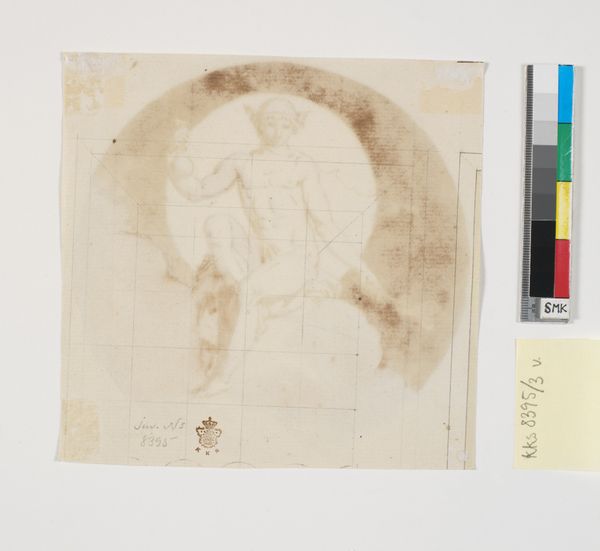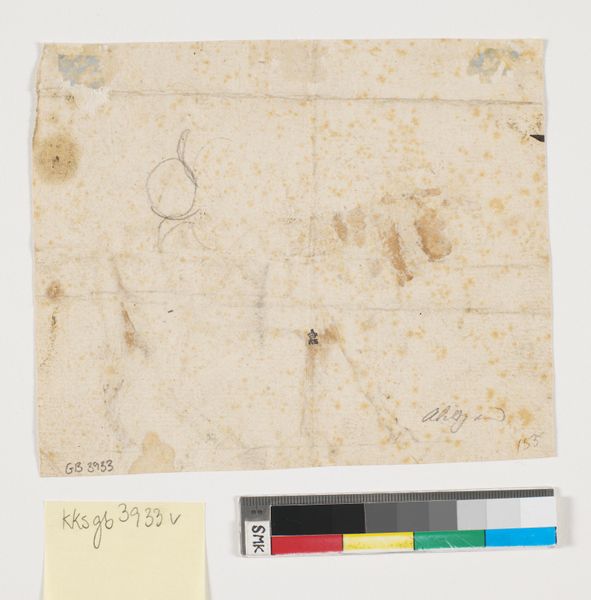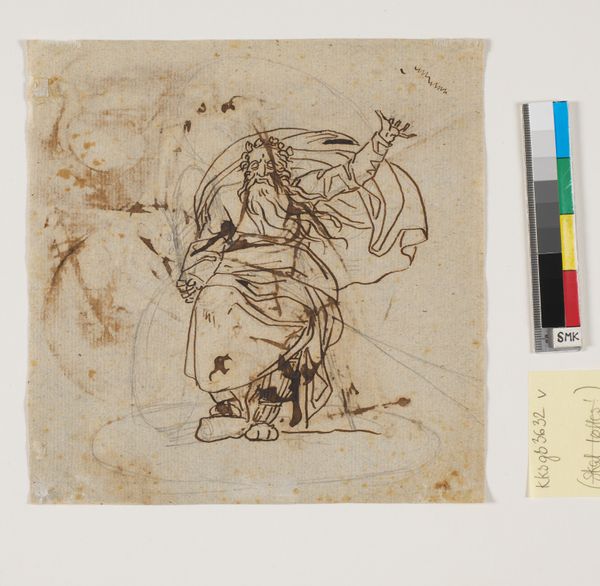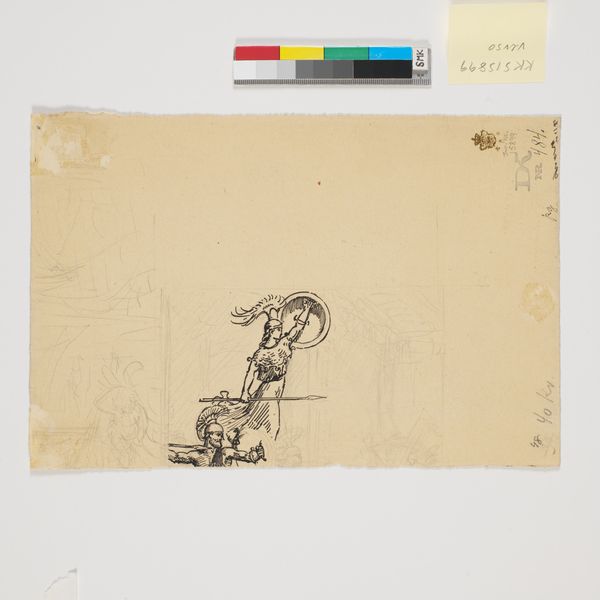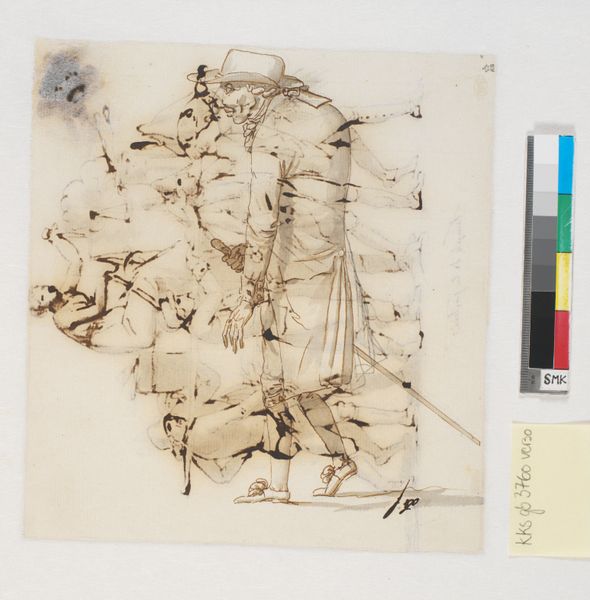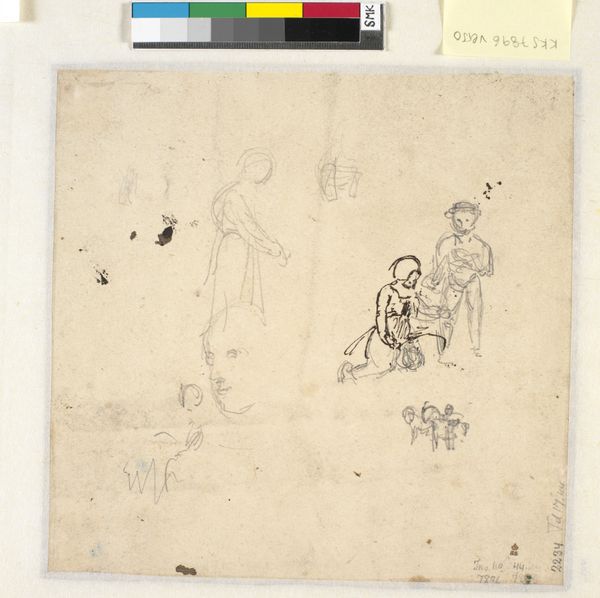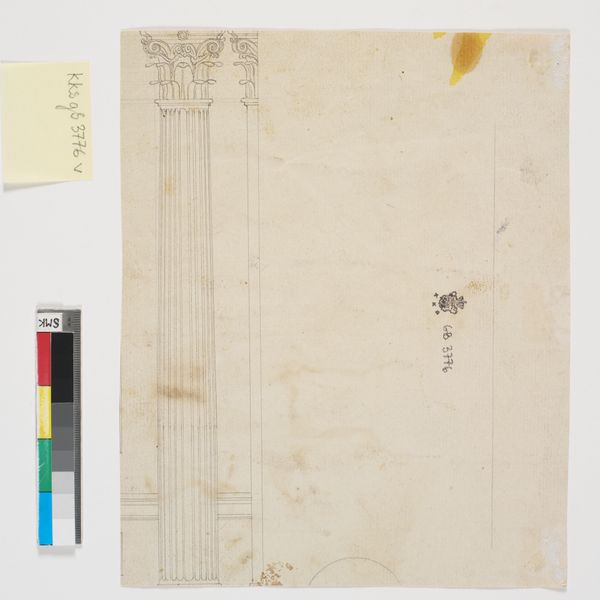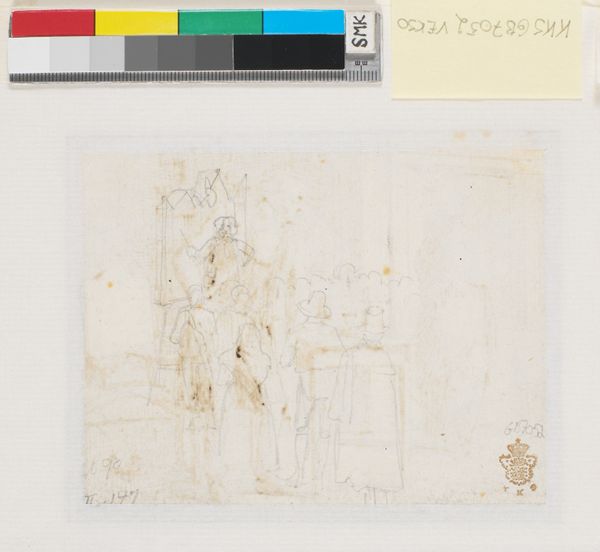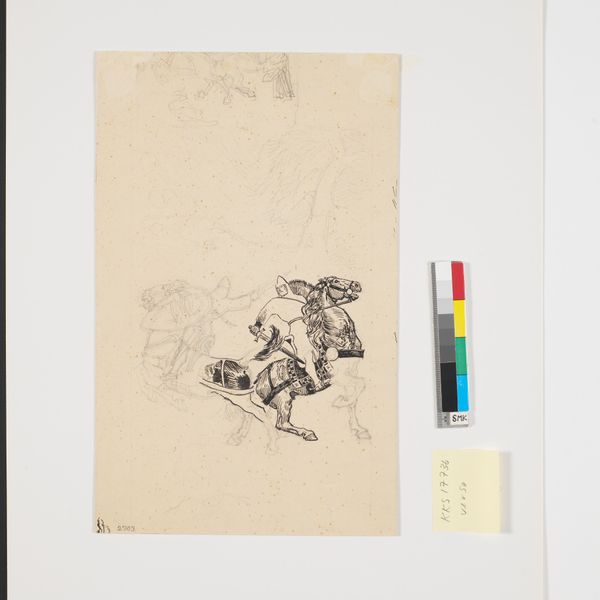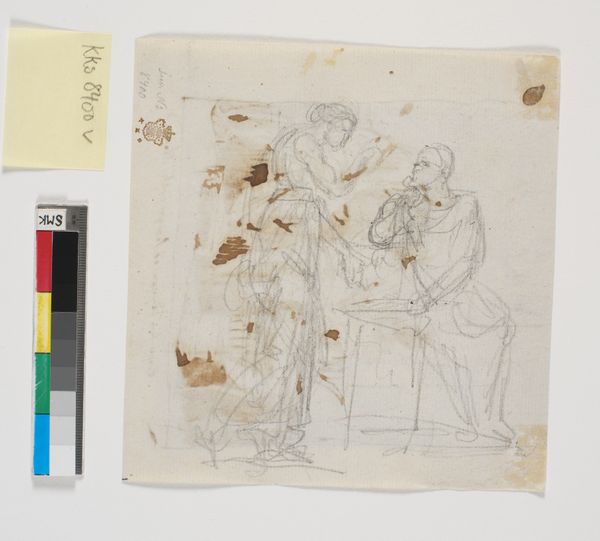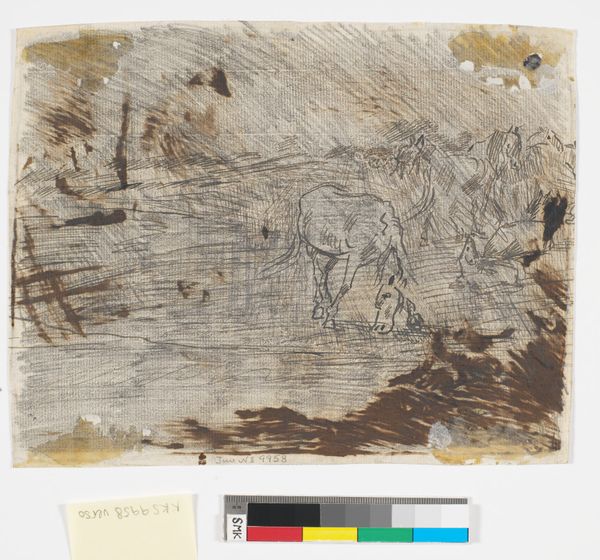
Overskåret rids af en siddende kvinde. Samt noget der minder om nogle farveprøver med vandfarve 1743 - 1809
0:00
0:00
drawing, paper, watercolor, pencil
#
portrait
#
drawing
#
paper
#
watercolor
#
pencil
Dimensions: 115 mm (height) x 120 mm (width) (bladmaal)
Curator: Here we have "Overskåret rids af en siddende kvinde. Samt noget der minder om nogle farveprøver med vandfarve," by Nicolai Abildgaard, dating roughly from 1743 to 1809. It's a pencil and watercolor drawing on paper. Editor: It's... fragmented. Almost ghostly. The wisps of pencil lines suggest a figure, but the color swatches are ambiguous, divorced from any obvious representational purpose. Curator: Indeed. It seems this work exists as both a study of form and perhaps an exploration of the materials at hand. Abildgaard was, of course, a pivotal figure in Danish Neoclassicism. One can argue these early works display hints of his artistic journey. Editor: Absolutely. Look at the line quality—nervous yet precise. It’s as though Abildgaard is searching for the essential contours, building the form from abstract marks rather than defining it outright. The gray watercolor smear feels almost like a deliberate counterpoint to that fine linework. Curator: Abildgaard, a leading figure in the Danish Royal Academy of Fine Arts, used such drawings not only as academic studies, as shown through the portrait-style subject, but also for instruction of the other artists who wanted to make portraits for royal customers. Editor: And yet the color itself seems intentionally arbitrary. The blue, brown and yellow strokes exist independently from the main figural drawing, not filling in shapes as you would classically see in traditional Neoclassicism. It emphasizes the artwork’s materiality. The drawing proclaims itself as a preliminary study. Curator: The color sampling you noticed can actually relate to the political period in which he was creating works, during rising debates in how colors translate into symbols of power and monarchy, but how also the meaning of each colour. Editor: Interesting how that contextual knowledge infuses new energy into these little splashes. I read them simply as elements, but they become charged, indicative of broader anxieties. Curator: Art very often mirrors societal discourse, doesn't it? Editor: It's those visual clues to cultural happenings which invite different readings of this work. Even within this rough, experimental quality, it reveals a conversation. Curator: Exactly. An everyday scene is not just an innocent observation of what it presents; rather, it mirrors complex structures beneath what is shown. Editor: Indeed. It shows so much of the beauty and impact embedded in simplicity.
Comments
No comments
Be the first to comment and join the conversation on the ultimate creative platform.
